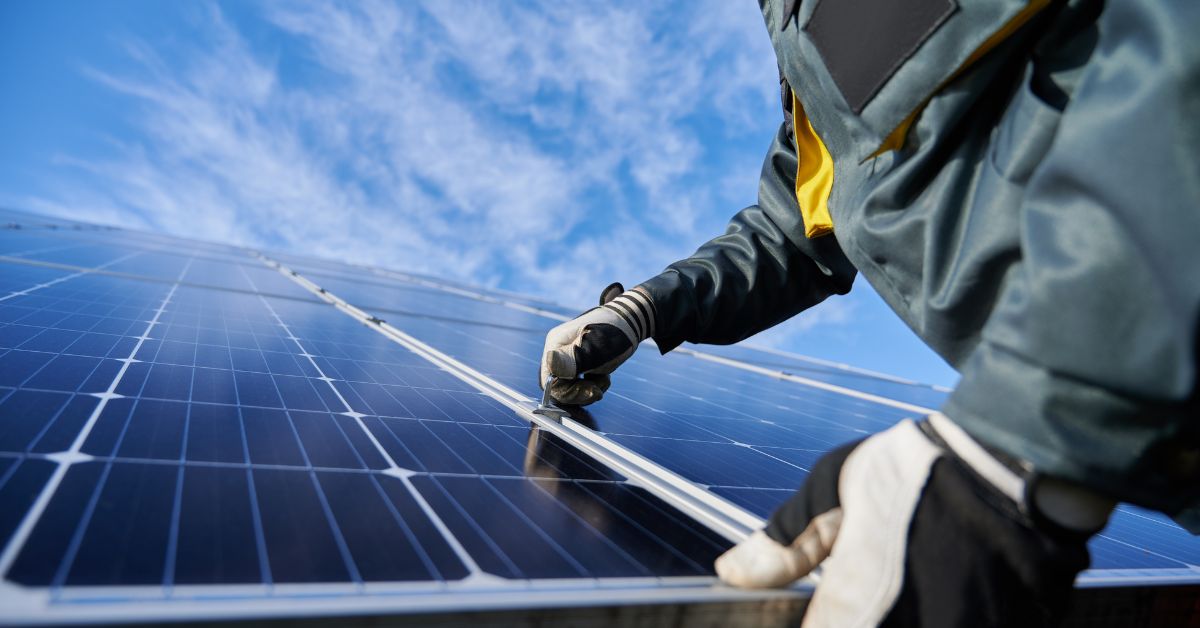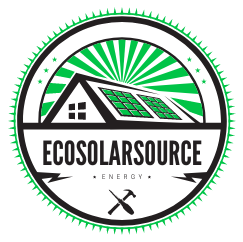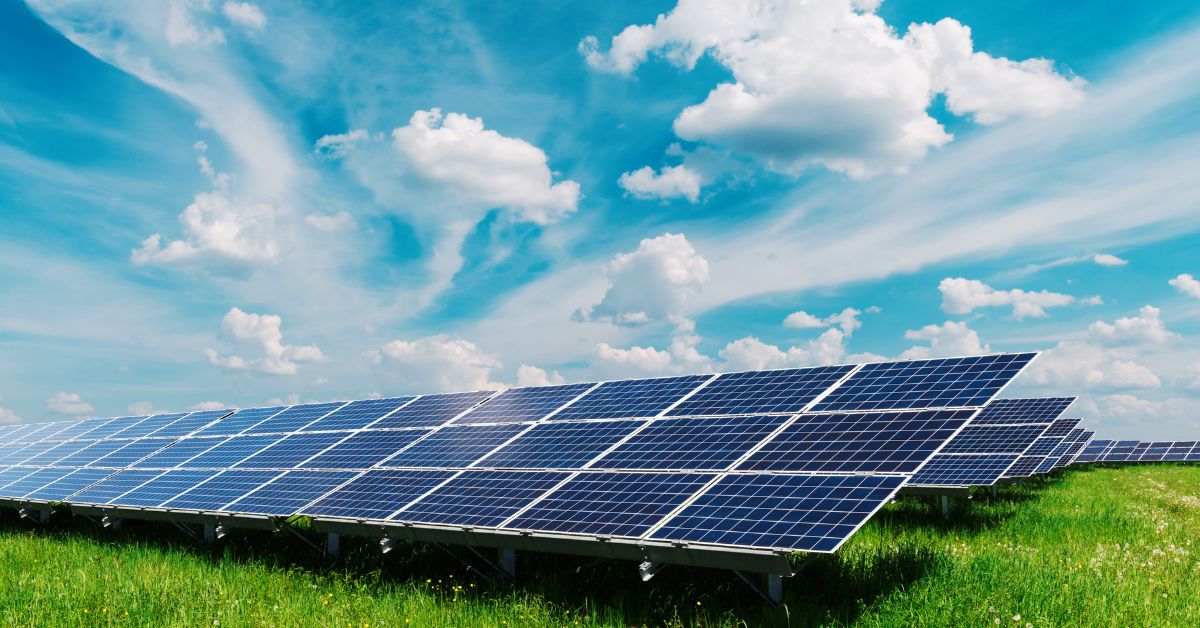1kW Solar Panel Size
A 1kW Solar Panel Size typically consists of 3 to 4 photovoltaic panels, each measuring around 1.7 meters by 1 meter. The total area required for installation is about 6 to 7 square meters. Ideal for residential rooftops, this system efficiently captures sunlight to generate clean, renewable energy for household use.
What is a 1kw solar system?
A 1kW solar system is a small-scale photovoltaic (PV) power generation setup that produces electricity from sunlight. It’s designed to produce around 1 kilowatt (kW) of electrical power under optimal conditions, such as full sunlight. This type of system is suitable for households or small businesses looking to reduce their dependence on grid electricity and lower their energy bills.
Here’s a breakdown of what a 1kW solar system involves:
Components of 1kW Solar System
- Solar Panels: The core component, solar panels, converts sunlight into direct current (DC) electricity. A 1kW system typically consists of 3 to 4 solar panels, each rated between 250-350 watts.
- Inverter: Solar panels generate DC power, but household appliances run on alternating current (AC). An inverter is used to convert the DC into usable AC electricity.
- Mounting Structure: This supports the solar panels, usually on the rooftop, and positions them at an angle optimal for sunlight absorption.
- Batteries (Optional): In some systems, batteries are included to store excess power generated during the day for use at night or on cloudy days.
- Wiring and Other Accessories: Proper wiring, junction boxes, and fuses ensure the system operates safely and efficiently.
1kW Solar Panel Size
As the demand for renewable energy sources grows worldwide, solar power is becoming an increasingly attractive and accessible option for homeowners and businesses alike. Solar panels are central to this shift, with 1kW solar panels emerging as a popular choice for many. In this article, we will dive into the details surrounding 1kW solar panels: their size, performance, installation, benefits, costs, and other essential factors. Whether you are a solar enthusiast or just starting to explore the possibilities, this guide will help you understand everything you need to know about 1kW solar panel systems.
1. Understanding the Basics of Solar Panels
Before diving into the specifics of 1kW solar panels, it’s essential to understand the basics of solar technology. The solar panels convert sunlight into electricity using photovoltaic (PV) cells. These cells are made of semiconductor materials (typically silicon), which absorb photons from the sun and release electrons, creating an electric current.
The amount of electricity a solar panel can generate depends on factors such as its efficiency, size, and the amount of sunlight it receives. Solar panel systems are often sized by their power output, measured in kilowatts (kW). A 1kW system can generate 1 kilowatt (1000 watts) of power under optimal conditions.
2. What is a 1kW Solar System Mean?
A 1kW solar system refers to the total electrical output the solar panels are capable of generating. Specifically, under ideal conditions—maximum sunlight exposure and optimal installation—a 1kW solar panel system will generate approximately 1 kilowatt-hour (kWh) of electricity per hour of full sunlight.
To break it down further:
- 1kW (kilowatt) = 1000 watts
- 1 kWh (kilowatt-hour) = the energy consumed by a 1000-watt appliance running for one hour
The amount of energy a 1kW solar panel system can produce in a day or month will depend on various factors, such as geographic location, climate, season, and shading conditions. On average, a 1kW system can produce around 4 to 5 kWh of electricity per day in areas with abundant sunlight.
3. The Size of a 1kW Solar Panel System
The physical size of a 1kW solar panel system is determined by the number of panels needed to generate 1kW of power and the size of each panel. The size and number of panels required vary depending on the panel’s efficiency, typically ranging from 15% to 22%. High-efficiency panels produce more power per square meter than lower-efficiency panels.

Here’s a breakdown of typical solar panel sizing:
- Standard Solar Panel Wattage: Most solar panels on the market have a power rating between 250 watts and 400 watts per panel. A standard 1kW system might use panels in the range of 330 watts, requiring around 3 to 4 panels to generate 1kW of power.
- Physical Dimensions of Solar Panels: The size of solar panels varies slightly depending on their manufacturer, but the average dimensions are typically 1.6 meters (about 5.25 feet) in height and 1 meter (about 3.28 feet) in width.
For example:
- 330W Panel Size: A standard 330W panel is roughly 1.6m x 1m in size. Therefore, a 1kW system with 3 panels will cover approximately 4.8 square meters (51.67 square feet).
- 250W Panel Size: A 250W panel will also measure about 1.6m x 1m in size, but since 4 panels will be required to reach 1kW, it will cover around 6.4 square meters (68.89 square feet).
In summary, depending on the panel’s wattage, a 1kW solar panel system typically requires 3 to 4 panels, covering an area between 4.8 and 6.4 square meters. Higher-efficiency panels may reduce the number of panels required and the total space needed for installation.
4. Factors That Affect Solar Panel Size and Output
Several factors influence the size and output of a 1kW solar panel system:
a. Panel Efficiency
Solar panel efficiency refers to the percentage of sunlight that a panel can convert into usable electricity. Higher-efficiency panels produce more power in a smaller area, meaning fewer panels are needed to generate 1kW of energy. Most standard panels have an efficiency range of 15% to 22%, with premium options reaching 22.8%.
b. Location and Climate
The amount of sunlight a solar panel receives depends heavily on its geographic location. Areas with high levels of solar irradiance (such as parts of California, Australia, and India) allow solar panels to produce more energy than regions with lower sunlight exposure.
The climate also plays a role, as solar panels perform best in cooler temperatures. Excessive heat can reduce their efficiency, even in sunny locations.
c. Orientation and Angle of Installation
The orientation and tilt of the solar panels affect how much sunlight they can capture. For optimal energy production, solar panels should face true south (in the northern hemisphere) or true north (in the southern hemisphere) and be installed at an angle that matches the latitude of the location.
Roof-mounted solar panels need to be installed at the correct angle to maximize their exposure to the sun. Ground-mounted panels can be more easily adjusted but require additional space.
d. Shading and Obstructions
Shading caused by nearby trees, buildings, or other obstacles can significantly reduce the output of a solar panel system. Even partial shading can lower the performance of a 1kW solar system, as shading one panel in a series can affect the entire array.
Modern systems often come equipped with bypass diodes and microinverters to mitigate the impact of shading, but it’s still essential to install the panels in an area that receives full sunlight for most of the day.
5. Average Energy Production from a 1kW Solar System
The energy production of a 1kW solar system varies depending on local conditions. However, on average, a 1kW system produces between 4 and 5 kWh per day, depending on the location and time of year. This translates to about 120 to 150 kWh per month or 1,460 to 1,825 kWh annually.
a. Regional Differences
- High-sunlight regions: In locations with ample sunlight, such as the southwestern United States, southern Spain, or parts of Australia, a 1kW system can produce up to 6 kWh per day.
- Moderate-sunlight regions: In regions with moderate sunlight, such as northern Europe or the northeastern United States, a 1kW system may produce closer to 3 to 4 kWh per day.
- Low-sunlight regions: Cloudy or high-latitude regions may see lower daily outputs, with 2 to 3 kWh per day on average.
b. Seasonal Variations
Seasonal changes can also impact energy production. During the summer months, when the sun is higher in the sky and days are longer, a 1kW system will produce more energy. In the winter months, shorter days and lower sun angles may result in decreased energy production.
6. Cost of Installing a 1kW Solar Panel System
The cost of installing a 1kW solar panel system depends on several factors, including the price of the solar panels, the cost of installation, and any additional components required (such as inverters, batteries, and mounting systems). On average, the price for a 1kW solar panel system ranges from $1,500 to $3,000, depending on the location, manufacturer, and complexity of the installation.
a. Solar Panel Costs
Solar panels make up the bulk of the cost of a solar system. Prices can vary based on the type and brand of panels chosen. Lower-efficiency panels tend to be less expensive but require more space, while higher-efficiency panels come at a premium.
b. Installation Costs
Installation costs can vary depending on whether the panels are roof-mounted or ground-mounted. Roof-mounted systems typically cost less to install, but ground-mounted systems provide more flexibility for optimal panel placement.
c. Inverter and Other Components
A 1kW solar panel system also requires an inverter to convert the direct current (DC) electricity produced by the panels into alternating current (AC) electricity used by most homes. The cost of inverters and other system components, such as racking and wiring, must also be factored into the total price.
d. Financial Incentives
Many countries and regions offer financial incentives, rebates, and tax credits for installing solar panels. These incentives can significantly reduce the overall cost of a 1kW solar panel system, making it more affordable for homeowners and businesses.
7. Benefits of a 1kW Solar Panel System
Investing in a 1kW solar panel system offers numerous benefits for both homeowners and the environment:

a. Energy Savings
A 1kW solar panel system can offset a portion of your electricity bill, reducing your reliance on grid electricity. Over time, the savings on energy bills can help offset the initial cost of installation, and in many cases, solar systems can pay for themselves within a few years.
b. Environmental Impact
Solar energy is a clean, renewable source of power that produces no greenhouse gas emissions. By installing a 1kW solar panel system, you are reducing your carbon footprint and contributing to the fight against climate change.
c. Energy Independence
With a 1kW solar panel system, you generate your electricity, making you less dependent on energy companies and fluctuations in electricity prices. This energy independence is especially beneficial in areas prone to power outages or where electricity costs are high.
d. Increased Property Value
Homes with solar panel systems often see an increase in property value, as potential buyers are attracted to the prospect of lower energy bills and reduced environmental impact.
8. Is a 1kW Solar Panel System Right for You?
While a 1kW solar panel system is a relatively small-scale solution, it can be an excellent choice for certain households or applications. To determine if it’s right for you, consider the following factors:
a. Energy Consumption
A 1kW system is ideal for households with low to moderate energy consumption or for individuals looking to supplement their energy needs. If you use a lot of electricity, you may need a larger system or multiple 1kW systems to meet your energy demands.
b. Available Space
The amount of space available for solar panel installation will affect your system size. If you have limited roof space or land area, a 1kW system with high-efficiency panels may be a good fit.
c. Budget and Financial Goals
If you’re working with a smaller budget, a 1kW system can be a cost-effective way to start generating solar energy. Additionally, you can always expand your system later if your energy needs increase or if financial incentives become available.
9. What Warranties are Covered in a Solar Panel?
Investing in solar panels can be a significant decision for homeowners and businesses alike. Understanding the warranties that come with solar panel systems is essential to protect that investment. Solar panel warranties are typically divided into three primary categories: performance warranties, product warranties, and inverter warranties. Let’s break down what each of these covers:
1. Performance Warranty
A performance warranty guarantees that your solar panels will maintain a certain level of efficiency over a specified period. Most manufacturers guarantee that their panels will produce around 80-90% of their original capacity after 25 years.

- Degradation rate: Solar panels lose efficiency over time. A typical degradation rate is about 0.5-1% per year. The warranty ensures that the efficiency loss doesn’t exceed this percentage annually.
- Guaranteed production: If the panels fail to meet the guaranteed performance level within the warranty period, the manufacturer will often replace or repair the underperforming panels.
2. Product Warranty
A product warranty covers the physical components of the solar panel itself. This ensures the panels are free from defects in material and workmanship that could affect their ability to generate power. The product warranties last between 10 to 25 years.
- Defect coverage: This warranty covers issues like cracking glass, corrosion, or electrical faults caused by poor manufacturing.
- Repair or replacement: If a defect occurs within the warranty period, the manufacturer will usually repair or replace the defective panel at no cost.
3. Inverter Warranty
Solar inverters, which convert the DC power generated by the solar panels into usable AC power for your home, also come with their warranties. Since inverters are typically more prone to wear and tear, their warranties tend to be shorter than those for solar panels, usually ranging from 5 to 12 years.
- String inverters: These are the most common type and usually come with warranties of 5 to 10 years. Extended warranties can be purchased for longer protection.
- Microinverters: Microinverters are generally installed on each panel, and their warranties typically last up to 25 years, aligning with the panel warranties themselves.
4. Workmanship Warranty
Some solar installers offer a workmanship warranty, which covers issues related to the installation process. This ensures that the system has been installed properly and safely, protecting you from installation errors that could reduce the system’s performance or cause long-term issues like roof leaks.
- Typical coverage period: Most workmanship warranties last between 5 and 10 years, though some companies may offer longer warranties as a testament to the quality of their installation.
5. Extended Warranties
Manufacturers and installers often provide options for purchasing extended warranties for both the product and inverter, giving homeowners additional peace of mind for a longer period.
What’s Not Covered?
While solar warranties are comprehensive, there are certain exclusions to be aware of:
- Acts of nature: Damage caused by extreme weather events like hurricanes, floods, or lightning may not be covered, although homeowner’s insurance may help.
- Improper maintenance: If the system is not maintained according to the manufacturer’s guidelines, this can void the warranty.
- Unauthorized repairs: Repairs performed by non-certified technicians can invalidate warranties.
Conclusion
A 1kW solar panel system is a versatile, efficient, and eco-friendly solution for individuals and families looking to tap into renewable energy. While it may not cover all your energy needs, it can significantly reduce your electricity bills and carbon footprint. By understanding the size, installation process, costs, and benefits of a 1kW solar system, you can make an informed decision about whether this technology is right for your home or business.
Investing in solar power is a step toward a sustainable future, and a 1kW system can be an excellent starting point for those looking to make the transition to clean energy.

